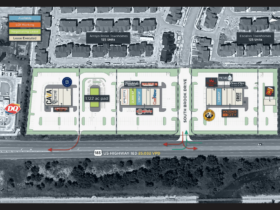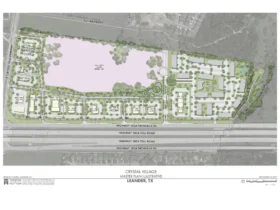Did you know before Leander was named Leander, it was called Bagdad? No? Well, that’s okay! We’re about to give you a history lesson on our wonderful city!
The 1800s
Bagdad was established on July 17th, 1882, but the first settlers arrived in 1845 after receiving land grants in exchange for their service in the Texas Revolution. These settlers lived in log cabins and were often at war with the American Indians, who also called Central Texas their home. Due to the frequent attacks, the Texas Rangers were brought in to protect the settlers. They built a house that fit 60 men. This building was one of the first buildings in what is now Williamson County.
In the 1850s, businesses began opening in Bagdad. One of the first businesses was a blacksmith shop. The first post office also opened during this time in 1858. Though isolated, the land offered an excess of water and timber, which enticed the settlers in the first place. Farming soon became the mainstay of the area as settlers grew their own food and made their own clothing. Many men joined the Southern forces to fight the Civil War. Most of them returned at the end of the war, as well as several freed slaves.
The Bagdad Cemetery was established in 1857. Its first burial was three-year-old John Babcock. His father gave the tract of land to the community, where the cemetery exists now. Other early graves consisted of Civil War veterans.
The town was a stop on the stage line from Austin to Lampasas, which meant goods could be delivered. By the 1870s, Bagdad had a hotel, school, several general stores, two blacksmith shops, and several churches. The first school was started by the Masonic Lodge and was the only free school in the area. During that time, churches played a crucial role in settlers’ lives and were a source of entertainment for early residents.
In the 1880s, citizens agreed to build the railroad tracks one mile east of town. But once completed, many moved their businesses and homes closer to the railroad tracks.
In 1882, Leander was named and established from the leftover lots of land sold by the railroad. The town was named after Leander “Catfish” Brown, one of many responsible for completing the rail line. This was the same time the post office was brought from Bagdad to Leander, and the first bank was established. The community expanded to include doctors’ offices, lawyers’ offices, and a drug store.
By the early 1890s, the population was estimated to be 329 people. In 1893, the first public school opened in Leander and Bagdad.
The 1900s
By the 1900s, the population dropped to 283 people. Farming was still the leading workforce, and life was centered around schools and churches. Schooling went up to 10th grade, and for higher education, you had to go to Liberty Hill or Georgetown. In 1919, A.K. Davis went to Mexico to recruit workers. The many families he brought back became Williamson County’s early Hispanic settlers.
After the depression began, the population lowered by nearly 100 people, and during World War II, the population dipped when many young men left to join the war effort.
Then in the 1950s, the population increased to 300, and housing subdivisions began to develop. Many citizens worked in the Austin area and used Highway 183 to commute into the Austin area. Frequently, residents made shopping trips to Austin.
On January 21st, 1978, the City of Leander was incorporated, and Joe Bates became the first mayor. At that time, the city was rapidly growing, so more subdivisions and schools were built.
By the 1990s, Leander’s population reached 3,398 residents. The school district was developing quickly, so they built their second high school in Cedar Park. During this time, the Crystal Falls Municipal Golf Course was built. To this day, it has proved to be one of the most beautiful and challenging golf courses in the area.
Today
Today, Leander’s population is over 52,000! The Leander Independent School District has become one of the largest school districts in Williamson County and the fastest growing district in Texas. Currently, there are five high schools, eight middle schools, and twenty-three elementary schools. The county encompasses Leander, Cedar Park, Jonestown, and parts of Northwest Austin.
If you’re interested in Texas Hill Country living, then contact us for more information! 512-619-3186 cummingsteam@purerealty.com
Photo credit to Williamson County Texas History

























